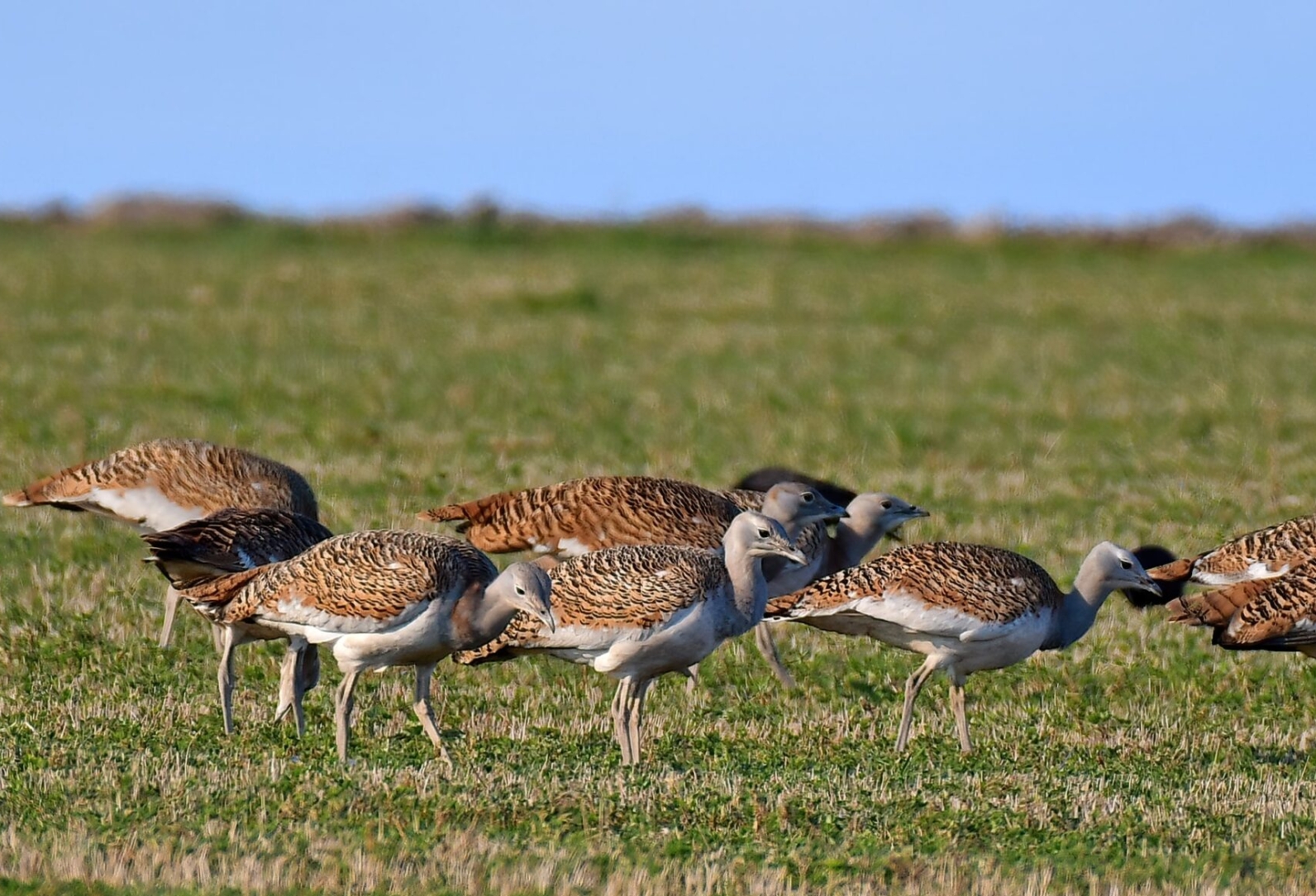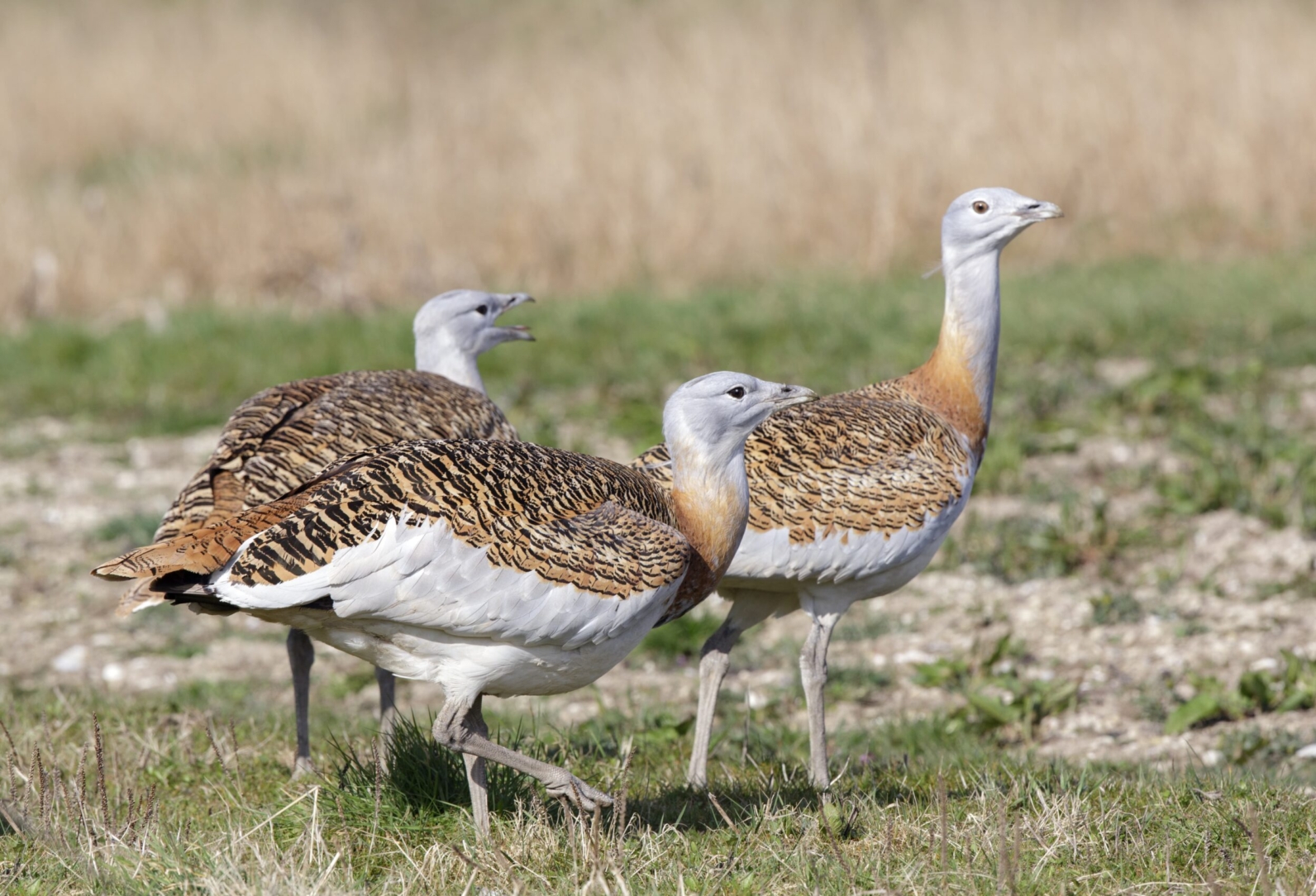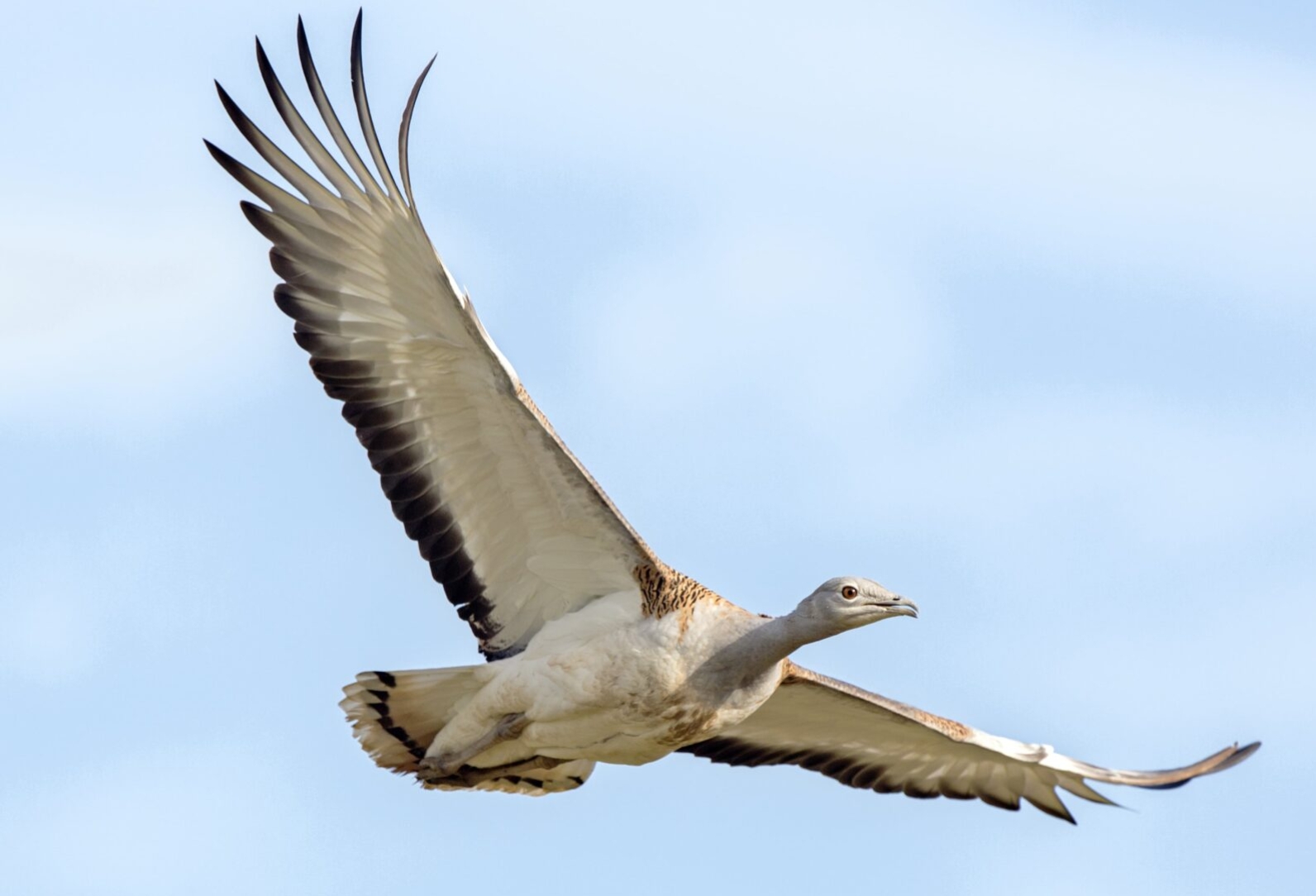Started in 1998 as a hobby interest by former police officer David Waters, the Great Bustard Group (GBG) has gone on to foster a tentative but growing population of the world’s heaviest flying bird on Salisbury Plain, Wiltshire.
However, the organisation had to overcome cultural shifts in conservation attitudes that today might seem outdated.
“There was a philosophy that because something has gone extinct it is because it can’t cope with prevailing conditions so it’s pointless to try and bring it back.” Says Waters. “The most common argument was that money should be spent on existing wildlife instead.”
The GBG changed minds by raising its own funds directly from the public revealing a willingness to back species reintroductions.
“It’s an attractive prospect to donate funding to the heaviest flying bird in the world.”
Though going extinct in the UK during the latter 19th Century, the great bustard still carries much cultural significance appearing on the Wiltshire county flag and coat of arms. This heritage and pride from the community have led GBG to receive sponsorship from local construction companies, brewers, farmers and other local volunteers.
Bustards make up a family of 26 species across all continents outside the Americas and migrate as far as the poles. The Great Bustard is the heaviest at over 20kg and though previously believed to be close relatives of the crane due to their shape, genetic discoveries now place them between cuckoos and flycatchers. They thrive in wide county arable farming areas and are particularly fond of oil seed rape.
The Enclosure Acts sounded the death knell of the Great Bustard as their remnant unfenced common land habitats were broken up into smaller fields for more intense public usage.
Given the widespread enthusiasm for species identification and classification of the Victorian Era, it is believed collectors also played a large part in the Great Bustard’s extinction.
“If you were an ornithologist you went round and collected birds and their eggs. And certainly long-lived birds like Great Bustards which are slow to mature and breed… The ethos of the Victorian collectors with rarer birds being more desirable, meant the last of a dying species would be the best one to have.”
The GBG’s work began with a commissioned feasibility study for reintroductions. A steering group was convened with English Nature (then Natural England), DEFRA and RSPB. Special licensing had to be obtained as the bird was now considered non-native. The government did not respond for two years.
Once licensing was finally obtained sourcing of birds became the main question. ICUN guidelines state wild stock rather than captive-bred stock should be used. A suitable source population was found in Saratov, Russia. The GBG embarked on a ten-year egg rescue programme among the vast fields collecting from natural Great Bustard nests.
“Russia isn’t a particularly easy place even for most Russians to live, but it was certainly quite challenging for an Englishman out there, particularly one with a police background. But we did manage to source many eggs with a reasonable hatch rate.”
The first batch of Wiltshire reintroductions established a small population with a high post-release attrition rate over the first few months. However, survival rates increased significantly once birds rode out their first winter demonstrating the Great Bustard could once again live and breed in southern England.
In support of the GBG, Chester University carried out a genetic study of each European Great Bustard population. In a first, researchers included genetic material taken from the under-foot of extinct English Great Bustards. Samples were taken from old museums hosting stuffed birds.
The closest living match was found in the Iberian (Spanish) gene pool. This surprised academics as this population was previously seen as too distinct owing to the vastly different Pyrenean climate. This was also a fortuitous find as the Iberian peninsula hosts half the globe’s Great Bustard population. This came at a good time as political shifts in Russia made working there increasingly difficult.
Following UK government licensing approval GBG began working alongside the Spanish local governments of Castille de Leon and Castille de la Mancha. Both issued licenses for eggs to be directly collected from nests over a timeframe allowing for natural breeding levels to be minimally affected.
Having been carefully transported back to the UK with the help of Madrid Zoo then Birdworld and Cotswold Wildlife Park, chicks were hand-reared at the GBG centre in Wiltshire.
Today the Wiltshire Great Bustard population numbers almost 100 and given the high death rate of captive-bred chicks, GBG’s focus is on supporting these wild-release birds through ongoing monitoring and support.
“Now reintroductions, translocations, and restorations are pretty mainstream activities for conservationists. Twenty-five years ago they weren’t, they were very unpopular.”
As the population continues to increase and stabilise, GBG hopes the bird can spread back to regions it previously called home, particularly Yorkshire, Lincolnshire and East Anglia.



